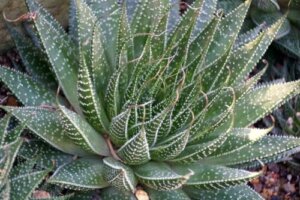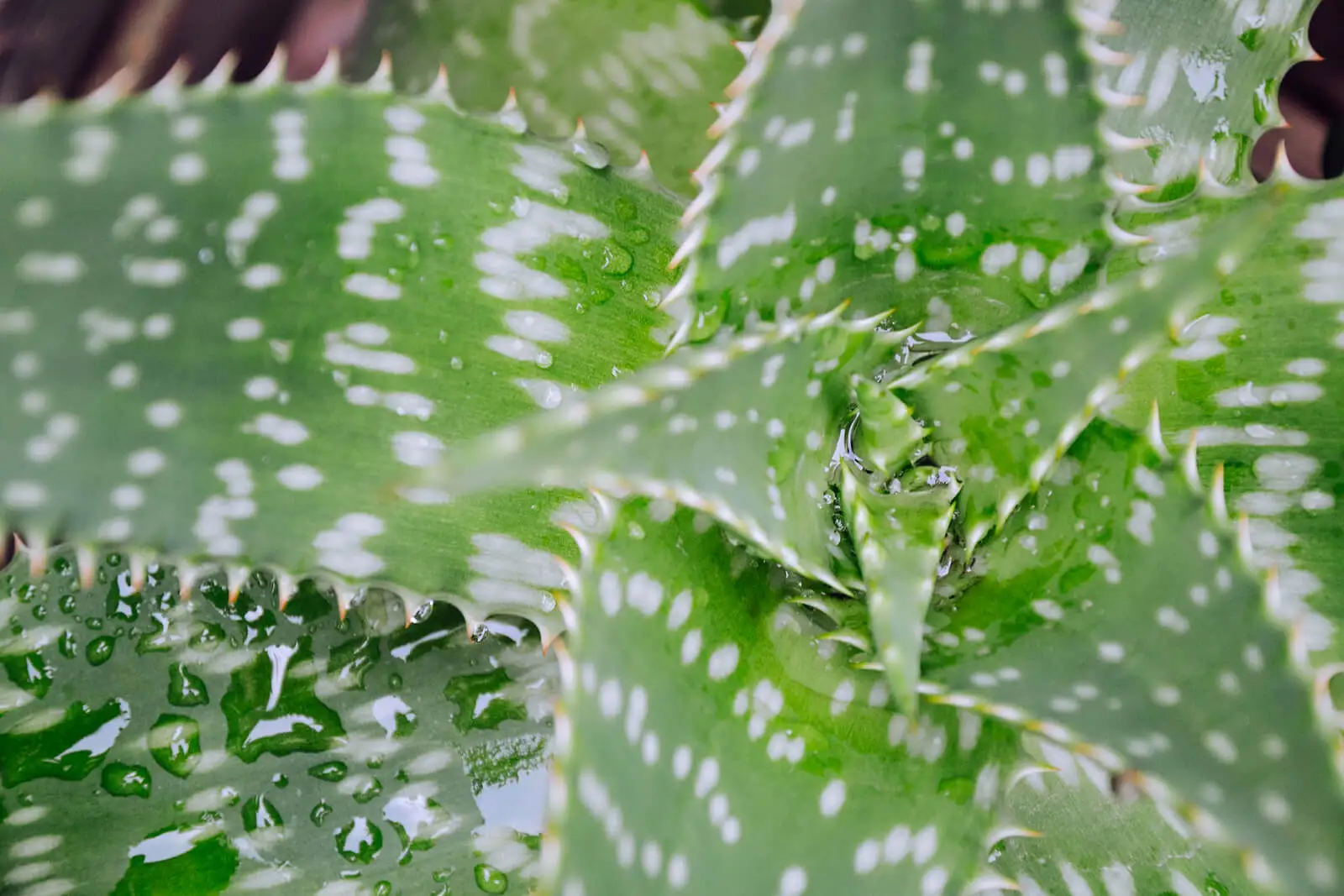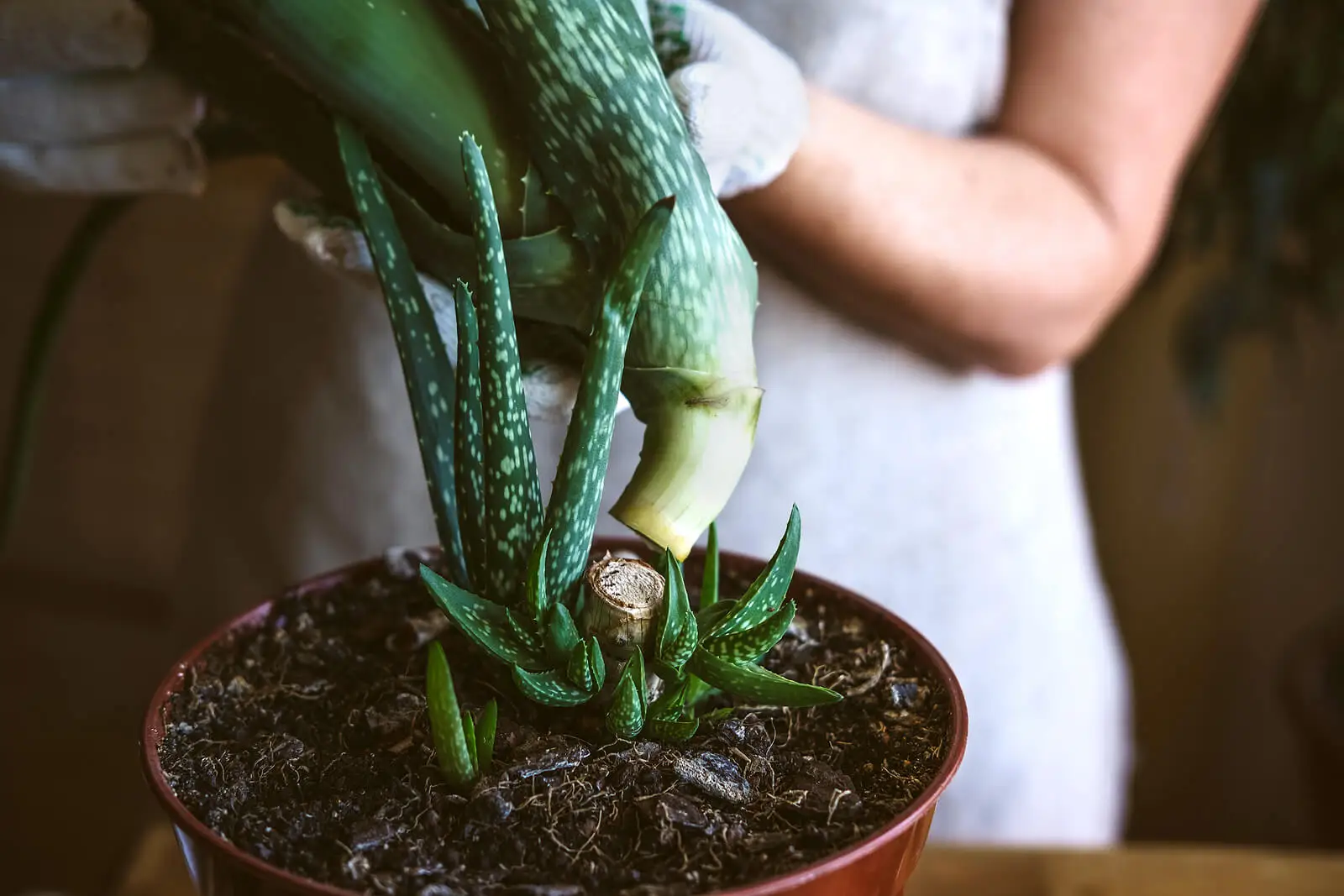Aloe Pratensis: Characteristics and Care Tips

Did you know that there are several types of aloe? According to their characteristics, each species can be used for health care, in cooking, or as medicine. It’s even said that certain varieties help to “attract good luck”. This is the case of aloe pratensis; discover how to look after it and what its most outstanding characteristics are.
Simple to care for, exotic in appearance, and ideal for creating a sense of harmony in the home; all of these characteristics are found in the plant we want to talk about today. Aloe pratensis is a type of succulent native to South Africa, famous for its resistance and for the belief that it helps to attract economic abundance.
Aloe pratensis, what are its characteristics?
Aloe pratensis differs from regular aloe because its leaves have sharper, sharper reliefs covered with thorns. In fact, in some countries, it’s called “wild aloe”. Its stalks are smaller, thicker and more numerous. These characteristics allow it to survive in both high and low temperatures.
However, as detailed in a publication in the International Journal of Molecular Sciences, its main phytochemical is aloesin, a substance known for its anti-inflammatory, laxative, and healing potential. However, unlike common aloe, it isn’t usually used for medicinal purposes, but for ornamental purposes.

Read more here: 5 Big Benefits that Aloe Vera Gel Boasts for Your Skin
How can you take care of wild aloe?
Aloe pratensis is a popular plant for decorating the home or beautifying the garden. Many prefer it for its hardiness, as its thick leaves can withstand almost any environment. It doesn’t require much watering and doesn’t require specific care. To keep this succulent in optimal condition, consider the following tips.
1. Light
This plant is suitable for both indoors and outdoors, as it adapts to any amount of light. Thus, you have the option of planting it in the garden, on the terrace, or in pots for the living room.
2. Careful watering
It’s better to forget to water it than drowning it. In this regard, you should leave this task only for when the soil is dry. To help you, insert your index finger halfway; if the soil feels wet, it isn’t time to water.
3. Water exposure
Be careful with this, as Aloe pratensis finds it difficult to prosper in climates that are too damp. If you plant it in the garden, it’s best to look for an area where it can be protected from rain. Also, avoid spraying its leaves.
4. A clay pot
Clay is a porous material that helps regulate the temperature in the plant, but terracotta or ceramic is also acceptable. Just make sure the container you choose has drainage holes.
Some places where you can place your aloe pratensis plant
Thanks to its exotic appearance, this succulent will grace any room. However, feng shui recommends placing it in places with the greatest flow of energy. According to this philosophy, this species has the ability to ward off bad vibes coming into the home. Added to this, it claims that it balances positive energy and attracts good luck.
1. The kitchen
The kitchen is the space par excellence to place an aloe pratensis plant. This place, according to feng shui, maximizes its effect, since the family usually spends a good part of their time together there.
2. The dining room
The dining room is usually the place where family members gather to talk about their dreams, funny moments of the day, and serious matters, which could involve plans and life or business goals that require good energy.
If you choose to place it in the dining room, you’ll need to ensure that the area has light and air inlets to help the plant prosper.
3. The bedroom
According to popular beliefs, Aloe Pratensis can keep away nightmares or bad vibes from the bedroom. This succulent is related to good luck, and so some people like to keep it nearby.
4. The entrance of the house
Because of its supposed ability to attract abundance and harmony, another ideal choice for placing wild aloe would be the entrance of the house. Some people claim that it can prevent bad vibes from entering, in addition to welcoming positive energies.

Discover more here: Feng Shui and Aromatherapy to Balance the Energy of Your Home
Aloe pratensis: a plant used against bad energies
Beyond its ornamental uses, aloe pratensis has been used as a protector for the home and an ally to attract luck and abundance. If you like to implement feng shui in your home, it’s a good complement to decorate and beautify different areas. The best part? It doesn’t require too much care.
All cited sources were thoroughly reviewed by our team to ensure their quality, reliability, currency, and validity. The bibliography of this article was considered reliable and of academic or scientific accuracy.
- Salehi B, Albayrak S, Antolak H, Kręgiel D, Pawlikowska E, Sharifi-Rad M, Uprety Y, Tsouh Fokou PV, Yousef Z, Amiruddin Zakaria Z, Varoni EM, Sharopov F, Martins N, Iriti M, Sharifi-Rad J. Aloe Genus Plants: From Farm to Food Applications and Phytopharmacotherapy. Int J Mol Sci. 2018 Sep 19;19(9):2843. doi: 10.3390/ijms19092843. PMID: 30235891; PMCID: PMC6163315.
- National Center for Biotechnology Information (2022). PubChem Compound Summary for CID 160190, Aloesin. Retrieved July 27, 2022 from https://pubchem.ncbi.nlm.nih.gov/compound/Aloesin.
- Rossbach S. Feng shui explores relationship between design and health–ancient Chinese art of placement. Calif Hosp. 1991 Mar-Apr;5(2):29-31. PMID: 10109404.
- Buckhardt. (2020). Feng Shui. In Chinese Creeds And Customs (pp. 346–350). Routledge. https://doi.org/10.4324/9780203041062-101
This text is provided for informational purposes only and does not replace consultation with a professional. If in doubt, consult your specialist.








